Categories: Electrical Reviews
Number of views: 16846
Comments on the article: 0
Modular relays and their use
Today, the word "relay" is understood not only as electromagnetic relays, which they were originally, a relay can now be both electronic and electromagnetic.
One way or another, a relay is a key designed to open or close an electrical circuit for one purpose or another, when certain circuit parameters take specified values, or when part of a technical device is in a given state, for example, as a result of external influences on it.
In a canonical form, an electromagnetic relay is an electromechanical device in which electrical contacts are mechanically closed or opened if an electric current is passed through the relay winding.
An electric current creates a magnetic field in the core of the relay, and the ferromagnetic armature of the relay is attracted to the core, driving the electrical contacts, and thus opening or closing the circuit that the relay commutes.
An example of such a relay is a turn relay in old domestic cars, providing a blinking light bulb in the signal turning lamp on the body.
Modular relays
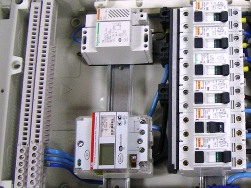 For the possibility of constructing highly functional panels with exceptional flexibility in the design of automatic control and protection systems, modular relays for various purposes are used. They make it possible to create reliable and functional solutions for almost any object. Compliance with the standard (modularity) in terms of component sizes allows you to complement functions, combine in a new way, and improve an already installed system, adding, for example, DIN rail new modules. Consider what modular relays are, and what they are used for.
For the possibility of constructing highly functional panels with exceptional flexibility in the design of automatic control and protection systems, modular relays for various purposes are used. They make it possible to create reliable and functional solutions for almost any object. Compliance with the standard (modularity) in terms of component sizes allows you to complement functions, combine in a new way, and improve an already installed system, adding, for example, DIN rail new modules. Consider what modular relays are, and what they are used for.
1. Impulse relay
When applying a short-term control pulse, the relay is activated by switching the power contact. This is a bistable relay that serves to control the on and off of electrical circuits from different places.
A typical example of the use of such a relay is to turn on or off the lighting of a staircase or a corridor, when you need to turn on the lighting by pressing a button while in one place, and turn it off by pressing another button while in another place, climbing, for example, to another floor on the stairs, or breaking a long corridor. Switches in this case are buttons without fixing, which may look like ordinary single-key switches or differ slightly.
Read also:Which is better to use: loop-through switches or bistable relays
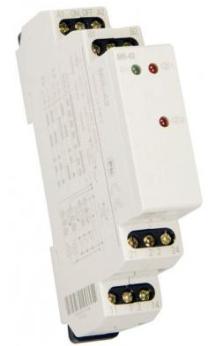
2. Intermediate relay
Provides galvanic isolation of control circuits and power circuits. Used to remotely turn on loads. When applying a control voltage to the relay coil, the power contacts are closed, and several independent circuits are simultaneously switched. So you can accompany the inclusion of the machine by switching the lighting to another mode, or by turning on the signal lamp to inform about the power of some dangerous device that requires attention from others.
An intermediate relay can act as an auxiliary, that is, to control the power of a more powerful relay or several powerful relays.
Read more about intermediate relays here: Intermediate relays: purpose, where they are applied and how they are chosen
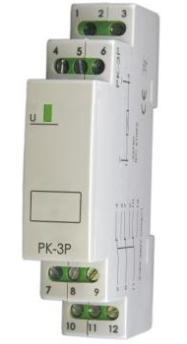
3. Time relay
These are modular timers for various applications with the ability to adjust the time intervals when the circuit should be closed and when it should be open. Time relays are often universal, but there are also specialized relays, for example, to turn off lighting on the staircases after a specified period of time after it is turned on.
Modular time relays are daily and weekly; their application creates extensive automation capabilities for industrial equipment for various purposes. Here, and lighting control, and the inclusion of pumping equipment, with the ability to turn off for the weekend or by any other algorithm; turning on and off ventilation, and much more.
Such timers are easily configured, and even a beginner can cope with their programming. Of course, these timers are ideally combined with other modular elements.
More about the use of such relays: Time relay in home automation
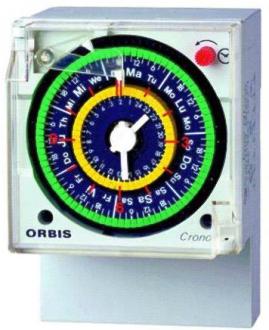

4. Temperature relay
The main purpose of the temperature relay is to maintain a given temperature regime. Turning on and off heaters, refrigerators, water heating systems, vegetable stores, control of powerful heating devices.
The ambient temperature, or the temperature of various kinds of substances is measured using a remote temperature sensor, which is connected to an electronic circuit, or a bimetallic plate is used, which bends when the temperature changes.
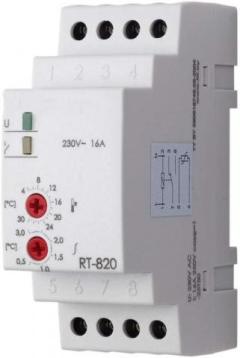
There are also multifunctional programmable controllers designed for more precise control of technological processes, and having an expanded range of both settings and indications.
An example of the use of such devices: Thermostats for electric heating boilers
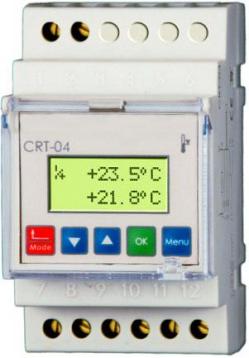
5. Relays for thermistor motor protection
The relay monitors the temperature of the motor winding by receiving a signal from a PTC thermistor mounted in the motor winding. When the coil is heated to a critical temperature, the resistance of the PTC thermistor increases, the relay contacts open, and remain open until the coil cools down to the set temperature.
This is necessary when it is impossible to accurately determine the temperature of the electric motor by current; this type of protection is especially relevant for motors with continuous start-up and when working with a frequency converter. As for engines without a built-in sensor, it can be additionally installed by a qualified specialist.
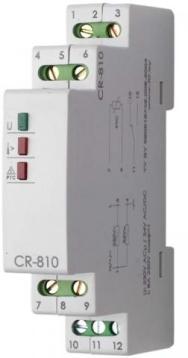
6. Photorelay
It is used, as a rule, to automatically turn on lighting at dusk, and turn off at dawn. Particularly suitable for controlling street lighting, parking lots, billboards, storefronts, various racks, etc. It is an important element of not only home, but also industrial automation.
The remote sensor serves as a source of data on the level of illumination, and should be placed where monitoring is necessary. The control of electrical installations depending on the illumination does not boil down to turning the light on and off, it can be an early start-up of equipment that needs to be warmed up before the start of the working day.
Read more about photorelay here: How to choose, configure and connect a photo relay
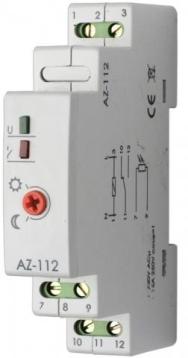
7. Phase control relay
It is used to control the symmetry of voltages, and, accordingly, the quality of power from the network as a whole. It is intended to protect electrical equipment in case of emergency, and to carry out emergency shutdown. After checking the network parameters for compliance with the norm, the relay reconnects the load.
During operation, the relay continuously monitors the magnitude of the voltage, and in the event of its value exceeding the permissible limits (to a smaller or larger side), it disconnects the load. Abnormal situations include violation of the order of alternating voltages, and the absence of at least one of the phases, which also leads to shutdown of the equipment, which protects it from failures.
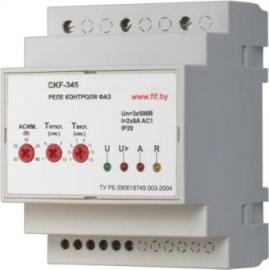
8. Load monitoring relay
The device monitors the state of inductive loads, and is mainly used in power circuits of single-phase and three-phase electric motors, where the load often changes.An analysis of the phase shift between voltage and current in one phase gives information about the load. With a cosine phi close to 0, the load is extremely small, with a cosine close to 1 it is too large. Thresholds can be set independently.
When overloading, the relay indicator lights up and the corresponding contact is disconnected, and when the load returns to acceptable limits, power is restored. For moments of starting the engine or short-term overloads, an allowable delay for operation is provided.
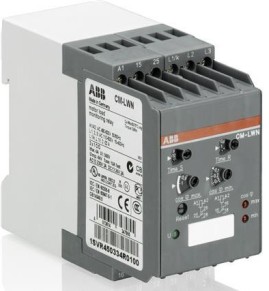
9. Voltage monitoring relay
Continuously monitors the voltage level of a single-phase or three-phase network. It protects the connected electrical equipment from both under and over voltage, turning off the power when the voltage assumes an invalid value. The upper and lower values are set by the user, usually this is done using potentiometers on the front panel of the module.
When the voltage level in the network is restored to permissible, the relay switches back on. This especially helps to protect household appliances from premature failure.

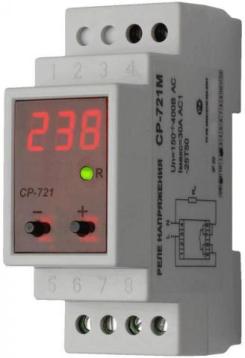
10. Current relay
It is used to protect electrical appliances in the event of a deviation of the AC current in the protected circuit from the set limits (most often it means exceeding the permissible current). Protects against short circuit.
This is one of the most important elements of automation. In some models, it is possible to disable non-priority circuits. There are modules with an external current transformer connected to the measuring inputs of the relay.
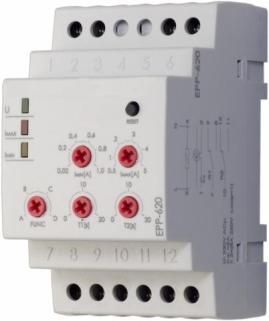
11. Frequency control relay
It monitors the frequency of alternating voltage in a network of 50 or 60 Hz. Two thresholds are set - upper and lower. The upper threshold can usually be set from +1 Hz, and go up to +10 Hz, and the lower, respectively, from -1 Hz to -10 Hz. 50Hz or 60Hz mode is user selectable. There are modules for a frequency of 400Hz.
Frequency control relays are used, among their possible applications, on solar power plants and together with alternators.

12. Indication relay
Signals that an automatic protection device has been triggered. In case of an emergency, an audible alarm sounds when power is supplied to the signal input of the module. The indicator light also turns on. On such a relay there is a button to turn off the alarm, as well as an executive relay, which serves to transmit an alarm signal.

13. Level control relay
Monitors the level of conductive fluids. This can be filling the tanks with water (tap, rainwater, sea water, spring water, wastewater) or liquids with a low alcohol content (wine, beer), there can be other conductive liquids such as coffee, milk or liquid fertilizers.
Liquid resistance in the range from 5 to 150 kOhm is usually measured by two electrodes, one of which is the top and the other the bottom. The use of such relays with flammable liquids such as gasoline, alcohol, vodka, liquefied gas, paint, kerosene, ethylene glycol is unacceptable.
Level monitoring relays for automation of pumping units

14. Speed control relays
Serves as a means of controlling the speed of rotation or linear movement of packaging equipment, conveyor belts, and power feed machines. Data on the current speed comes from an external sensor, and depending on the selected mode, the relay provides protection against reduced speed, protection against increased speed, or monitors the speed, preventing its change.
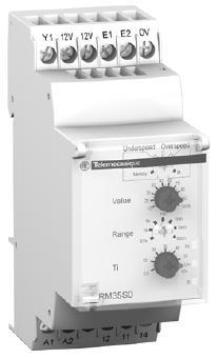
The sensor has either normally closed or normally open contacts, and the frequency of pulses from the sensor is adjustable in the range from 0.05 seconds to 10 minutes. The time delay when turning on the equipment, in turn, is adjustable from 0.6 seconds to 1 minute. The relay is blocked by closing an external contact.
See also on this topic: Modular contactors
See also at bgv.electricianexp.com
:
